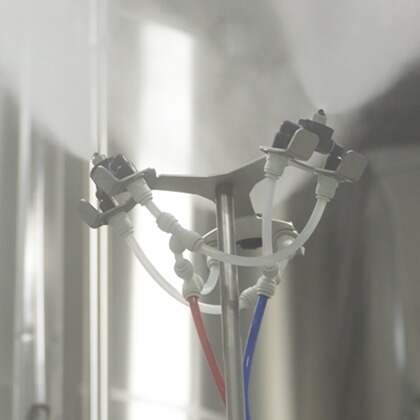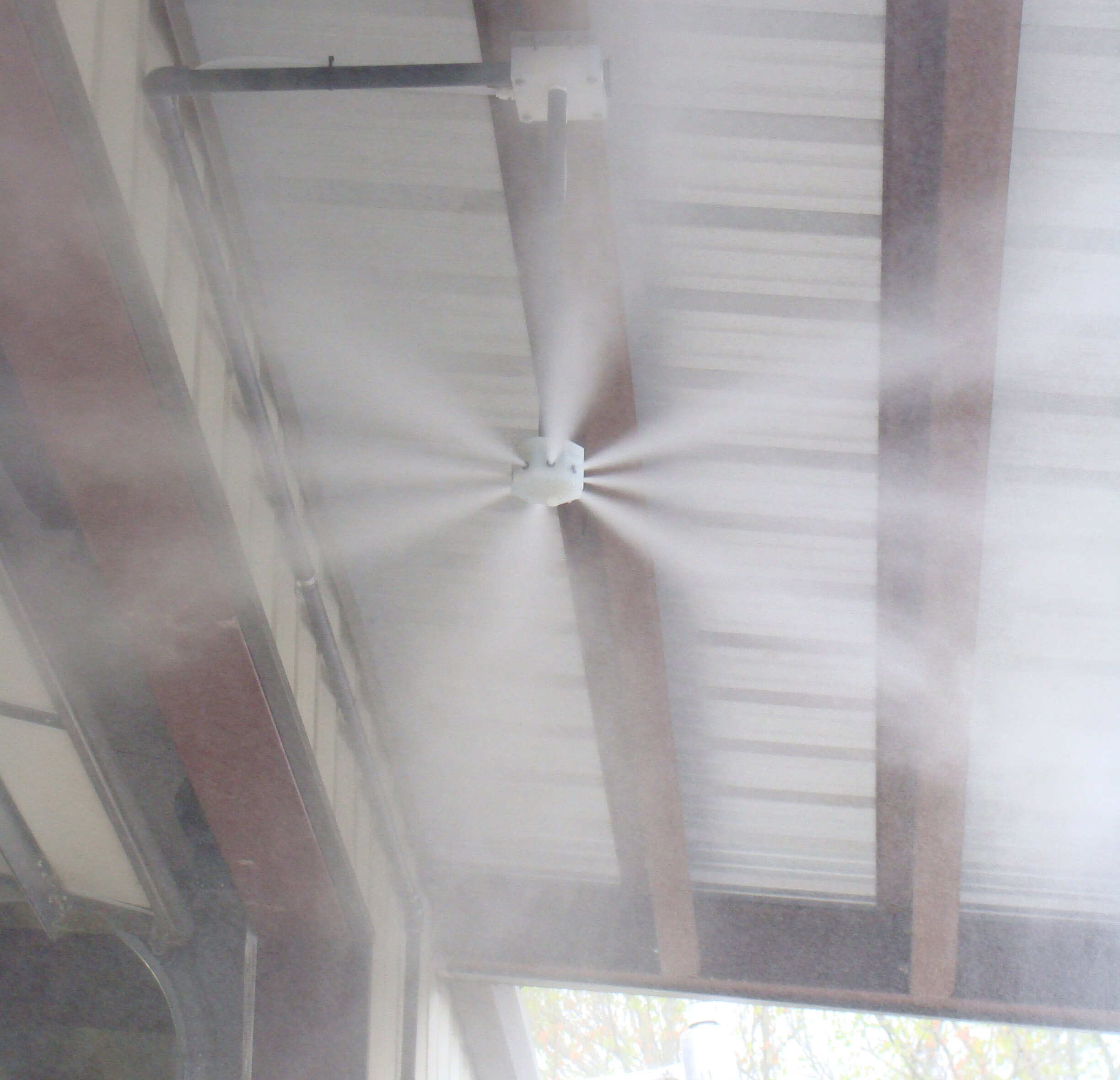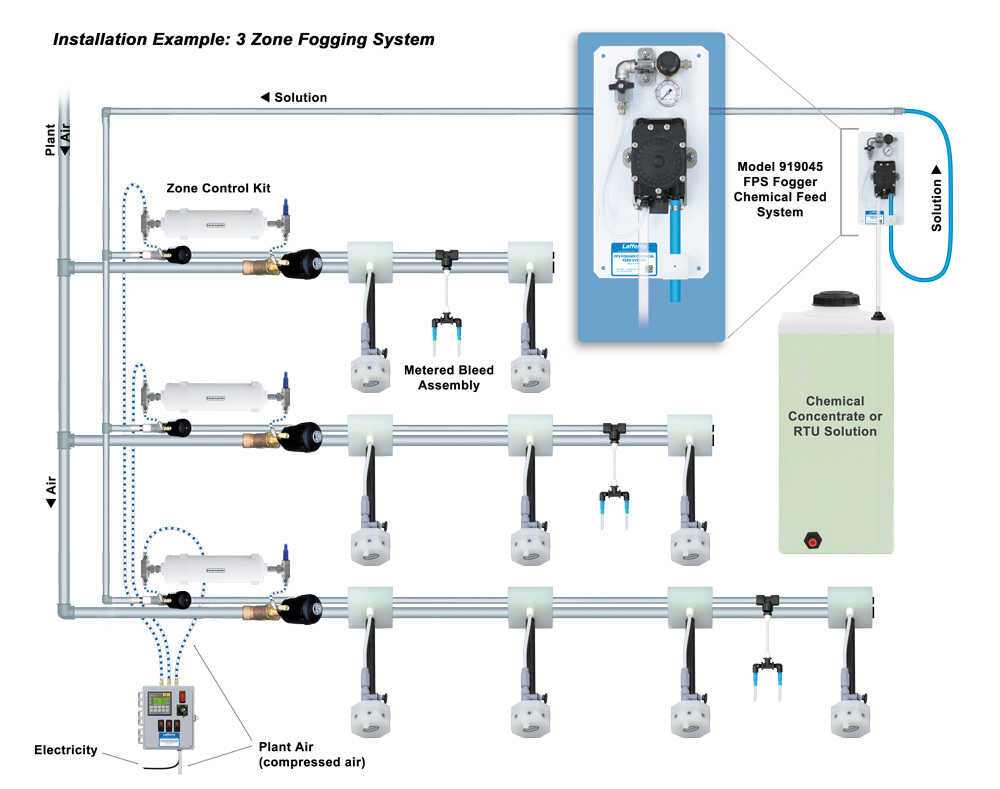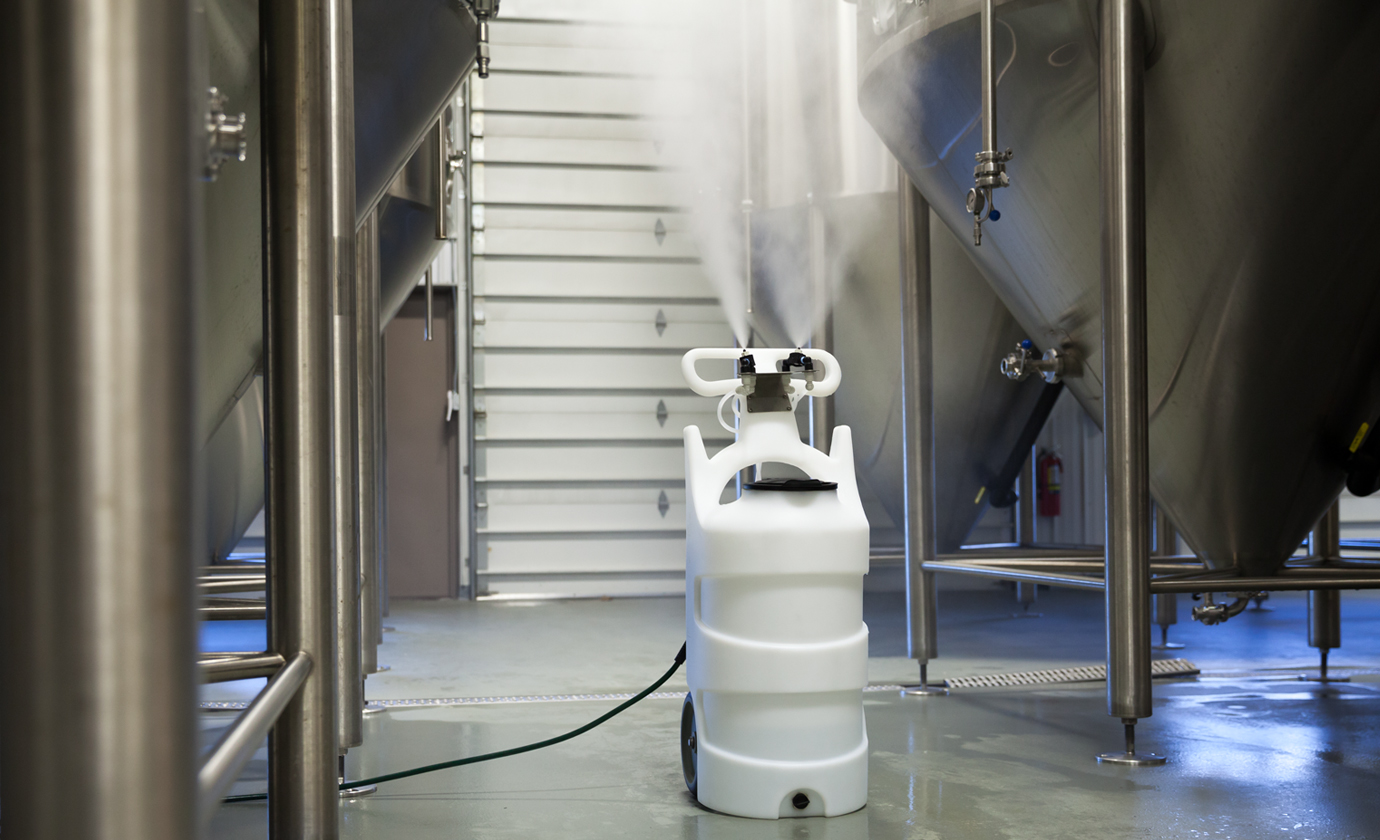Blog main photo courtesy of Innovative Cleaning Equipment
Part Two: When, Why, How, and Quantifying Fogging Programs
When and how to conduct fogging biocide treatments:
As stated above, our objective is to either eliminate or markedly reduce microbial niche sources on both environmental (Zones 3 & 4), and in some instances, on food contact surfaces (Zones 1 & 2). However, primarily Zones 3 & 4 that can impact Zones 1 & 2. A marked reduction in these inaccessible sources of microbial contaminants will reduce the microbes either in biofilms or soils that slough off and become airborne. This then reduces the risk of cross/re-contamination of food contact surfaces, especially CCPs in food/beverage products.
A plant’s or company’s food safety-sanitation program, under the direction of QA, needs to be able to conduct a quantified form of airborne microbial loads in each and every specific process step, room, or process in the HACCP plan for each production/product flow diagram. Without understanding, via baseline studies, the aerobiology from environmental surfaces, air handling equipment, and process equipment, a fogging or even a general environmental sanitation program is shooting blind.
So, the technology can be utilized to assess the airborne microbial densities during normal seasonal operations, at each process step. Likewise, it can be utilized for conducting validation and verification programs for a facility’s fogging program (see below in validation and verification program section). This way the efficacy of the fogging program can be tracked seasonally, and modified based upon performance data.
Should this room be fogged?
The room or area to be fogged must be first analyzed to see if it’s appropriate to be fogged. For example, if you have a large processing hall with 15-20 foot high ceilings, the room’s volumes will be too large to have a fogging unit fill the voids with sufficient dose and concentration of fogged disinfectant.
Room volume: You must first examine the volume of the room that’s targeted for fogged disinfection. If it’s too large, there are other delivery modalities to disinfect large environmental areas like foamed QAC or foamed PAA disinfectants delivered via a foaming unit on scissor lifts for overhead areas.
Room air flows and equipment considerations: Is the target room an open plan or with numerous cut-outs and recesses? What is the density of overhead HVAC or AC units? What is the room’s processing equipment layout and conveyor line density? All these factors are to target and ascertain if a fogging treatment or regimen are applicable for a plant’s targeted processing rooms.
What is the proper way to conduct biocide fogging?
When its ascertained that the target room is appropriate for successful biocide fogging, then one must utilize the appropriate fogging equipment that can properly dose into the room’s volume and layout.
Most plants will fog with portable fogging units (See Photos, courtesy of Innovative and Lafferty). [7] In either instance, the fogging equipment is turned on and off via remote timers, and with a set time period until the fogging operator or other personnel can re-enter the room. The time period for re-entry post-application does vary with the type of biocide. QAC-based is roughly 2 hours due to molecules being larger and a slow descent, while small oxidative molecules like Hypochlorite, PAA and Chlorine dioxide solutions are 1-hour for re-entry.
 Photo courtesy of Innovative Cleaning Equipment
Photo courtesy of Innovative Cleaning Equipment

Photos directly above and below courtesy of Lafferty Equipment Manufacturing

One can also install a permanent fogging system with fogging nozzles strategically placed into targeted process rooms. For example, a yogurt processing plant’s culturing rooms do contain installed, turnkey fogging systems.
The SSOP for fogging ANY biocide as a terminal disinfectant employs the equipment, PPEs, procedures and precautions that are also used by a licensed pest control operator for fogged insecticides. Highlighted below is a SSOP example for fogging our F-29 QAC product. [8]
For example, all the key information on PPEs must include:
- Need 1-2 fit-tested NIOSH respirators applicable for the type of disinfectant being fogged. The respirator is there for malfunction of the fogging unit or other emergency contingencies.
- Need goggles, face shield, neoprene gloves and apron, again for fogging operator to deal with equipment emergencies or contingencies.
The SSOP must designate proper placement of placard signage and barriers indicating in every applicable language that "Entry is prohibited. Fogging being conducted."
If the fogged biocide is at a disinfection level above food contact limits for that EPA product, then the food contact surfaces must be rinsed with water, and a re-application is needed of the same/different EPA product at approved food contact levels. Or, some plants will opt to clean and sanitize all food contact equipment before fogging and then drape with approved plastic sheeting during the environmental fogging process. They will then follow with re-sanitizing all food contact areas prior to startup.
Sometimes you can successively fog with approved food contact, no-rinse concentrations of the EPA-registered product, such as a sanitizer, and achieve your environmental control objectives. This is dependent upon your targeted pathogenic or spoilage microbes.
What is my microbial remediation objective?
Is the plant’s issue in a processing room(s):
- a vegetative, non-spore forming pathogen/spoilage bacterial strain
- a pathogenic or spoilage fungi (yeast or mold)
- a spore forming pathogen/spoilage bacterial strain
- a biofilm that is heterogeneous with a combo of microbe types
Fogging is much more successful as an environmental control strategy even if the problematic, inaccessible areas are either wet or dry cleaned (scraping and vacuuming) prior to fogging. Like normal cleaning and sanitizing, you truly can’t sanitize or disinfect a dirty surface! However, some environmental zones are very difficult to thoroughly clean, so your fogging objective is more of a control measure to keep the microbes under a critical limit, than say a true disinfection.
How do we measure a fogging procedure/programs effectiveness?
As discussed above, there are a number of approaches to ascertain the airborne microbial densities of a plant’s baseline levels, and to conduct both initial validations and subsequent verifications for a fogging program’s validity/performance. Each one has positive and negatives, and the one I recommend, and RMC utilizes. [9]
- Sedimentation/Settling Plate Method: Passive petri dish with non-selective/selective media agar plates placed in designated sites for 15-30 minutes. Not reliable.
- Impactors: A quantified forced high air velocity that slams the microbes via inertia onto a media surface.
- Impingers: Emulates a nasal passage co-mingling air with liquid media, plated via surface plating or membrane filter capturing and plated. Are low air volume samplers.
- Slit to Agar samplers: Specific air volume is sucked through a slit orifice and hurtled onto spinning on a turntable in a petri dish filled with non-selective or selective agar. Air sample per time unit data.
- Stacked Sieves: Similar to an Impactor, uses a media in petri dish and have descending order (largest holes to smallest diameters) of stainless plates with holes with agar petri dishes sandwiched in between. Has a fixed sampling volume (Liters per min.). Amount of plates and petri dishes vary. Used in pharmaceutical clean rooms.
- Centrifugal Samplers: This air sampling type relies on creating a vortex air stream that functions as a centrifuge for airborne microbes. The centrifugal air flow deposits the airborne microbes onto a flexible agar strip. The flexible agar strip can be general media, or specific for yeast mold or coliforms. These flexible mini petri dish strips are incubated and counted with a formula calculated as CFU /cubic meter air or cubic foot air.
The Reuters Centrifugal Air Sampler (RCS) is the type from EMD that Rochester Midland has successively utilized for years in its BrandGuard® component of the AuditGuard® Program. We utilize this airborne microbial air sampler for general HACCP risk assessments in the BrandGuard program reviews as well as for specific verification studies post environmental sanitation and disinfection including fogging for our customers throughout North America.
See photos below. [10]
Literature citations/sources:
7. Fogging unit photos courtesy of Innovative Cleaning Equipment,, Grand Rapids, MI and Lafferty Equipment Manufacturing, North Little Rock, AR
8. Giambrone C. 2020, F29 QAC Fogging & Disinfection [Environmental] SSOP template,
9. Giambrone C 2005 Airborne Microbial Control Program’s Role in Food Plant Hygiene Food Safety Magazine Signature Series. www.foodsafetymagazine.com
10. EMD RCS High flow Sampler from EMD Millipore.
https://www.emdmillipore.com/US/en/products/industrial-microbiology/environmental-monitoring/environmental-monitoring-for-pharmaceutical-and-cosmetics-industry/active-air-monitoring-systems/rcs/FJ.b.qB.rL8AAAFA7gE.1Zwo,nav

